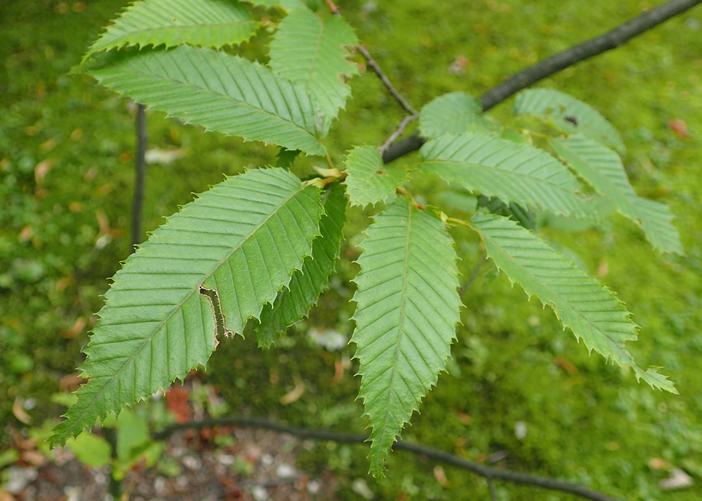Korean Hornbeam
(Carpinus turczaninowii)
Korean Hornbeam (Carpinus turczaninowii)
/
/

Krzysztof Ziarnek, Kenraiz
CC BY-SA 4.0
Image By:
Krzysztof Ziarnek, Kenraiz
Recorded By:
Copyright:
CC BY-SA 4.0
Copyright Notice:
Photo by: Krzysztof Ziarnek, Kenraiz | License Type: CC BY-SA 4.0 | License URL: https://creativecommons.org/licenses/by-sa/4.0 | Uploader: Kenraiz | Publisher: Wikipedia Commons












Estimated Native Range
Summary
Carpinus turczaninowii, commonly known as Korean Hornbeam, is a deciduous tree native to the understory of temperate forests in Korea, China, and parts of Japan. It is a slow-growing species that typically reaches a height of 10-30 feet (3-9.1 meters) and a width of 2-9 feet (0.6-2.7 meters), with a rounded to irregular crown. The tree is notable for its smooth, gray bark and fine-textured foliage. The leaves are ovate to lanceolate, with serrated margins and a characteristic pleated appearance. In spring, the tree produces inconspicuous catkins, followed by small nutlets that are attached to leafy, three-lobed bracts. The Korean Hornbeam is particularly valued for its attractive form and foliage, which turns a mix of yellow, orange, and red in the fall.
This tree is often used in bonsai due to its small leaves and fine branching structure. In landscape cultivation, it is suitable for small gardens, urban settings, and as a specimen tree. It thrives in full sun to part shade and prefers well-drained soils with consistent moisture. While it can tolerate low water conditions once established, it benefits from regular watering during dry periods. The Korean Hornbeam is relatively low maintenance and is not known to have serious pest or disease problems. However, it may require some pruning to maintain its shape, especially when grown as a bonsai.CC BY-SA 4.0
This tree is often used in bonsai due to its small leaves and fine branching structure. In landscape cultivation, it is suitable for small gardens, urban settings, and as a specimen tree. It thrives in full sun to part shade and prefers well-drained soils with consistent moisture. While it can tolerate low water conditions once established, it benefits from regular watering during dry periods. The Korean Hornbeam is relatively low maintenance and is not known to have serious pest or disease problems. However, it may require some pruning to maintain its shape, especially when grown as a bonsai.CC BY-SA 4.0
Plant Description
- Plant Type: Tree
- Height: 10-30 feet
- Width: 2-9 feet
- Growth Rate: Moderate
- Flower Color: N/A
- Flowering Season: Summer
- Leaf Retention: Deciduous
Growth Requirements
- Sun: Full Sun, Part Shade
- Water: Low, Medium
- Drainage: Medium
Common Uses
Bank Stabilization, Bird Garden, Butterfly Garden, Hedges, Low Maintenance
Natural Habitat
Temperate forests in Korea, China, and parts of Japan
Other Names
Common Names: 산서나무, 소사나무
Scientific Names: , Carpinus turczaninowii, Carpinus turczaninowii var. ovalifolia, Carpinus tuczaninowii var. chungnane, Carpinus turczaninowii var. chungnanensis, Carpinus turczaninowii var. coreana, Carpinus turczaninowii var. makinoi, Carpinus turczaninowii var. turczaninowii,
GBIF Accepted Name: Carpinus turczaninowii Hance